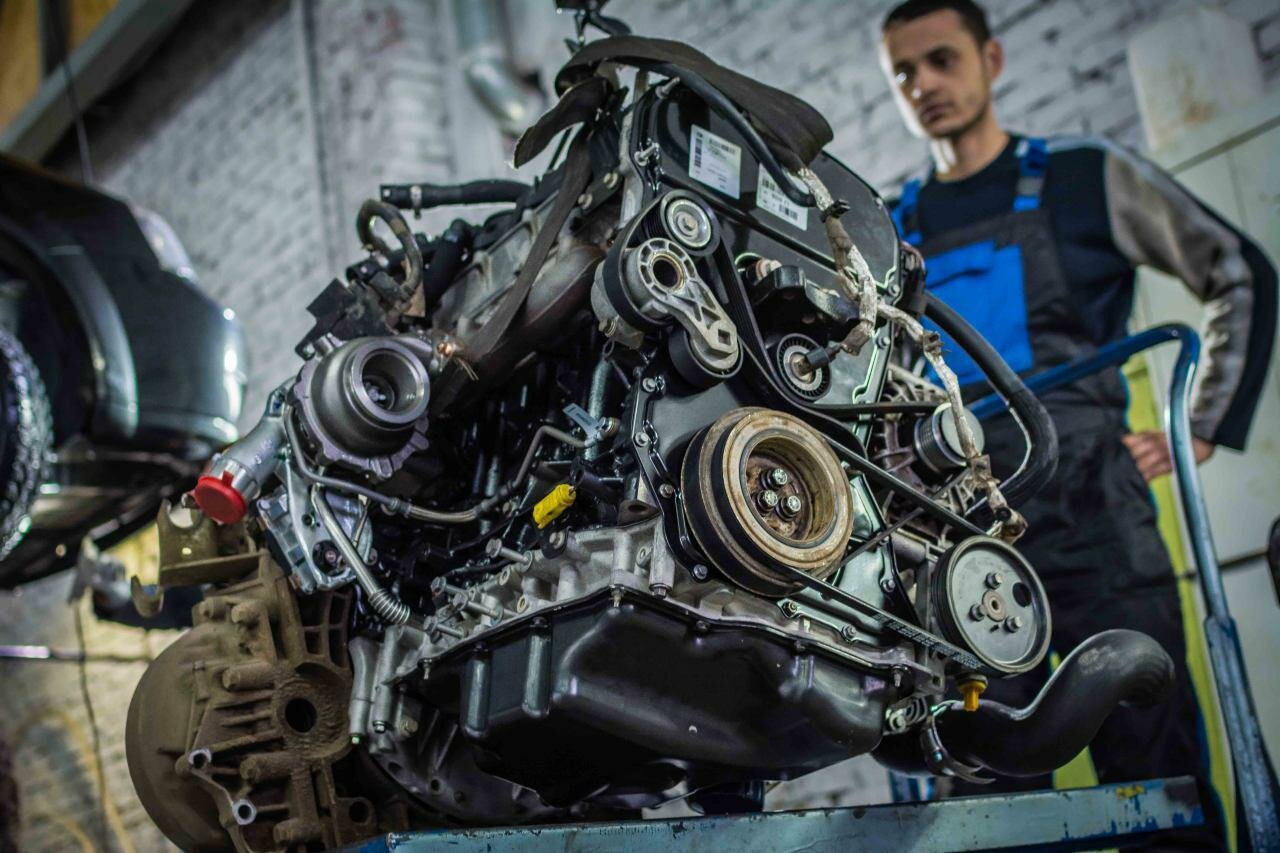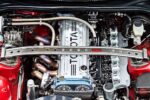The 2012 Jeep Wrangler is a popular choice for off-road enthusiasts and everyday drivers alike, thanks to its rugged design and capable performance. However, the 3.6-liter V6 engine that powers this vehicle has garnered a reputation for a range of issues that can leave owners frustrated. Understanding the symptoms of these problems is crucial for anyone who drives or maintains a 2012 Wrangler.
When you start experiencing issues with the engine, it’s essential to recognize the signs early on. Many drivers have reported a variety of symptoms, which can range from minor annoyances to serious performance failures. These issues can affect how the vehicle runs, its fuel efficiency, and even your safety on the road.
Common Symptoms of Engine Problems
Performance Issues
One of the first signs that something might be off with your engine is a noticeable decrease in performance. You might find that your Wrangler struggles to accelerate or feels sluggish during normal driving conditions. This can be particularly evident when trying to merge onto highways or climb steep hills.
Rough Idling
Another symptom to watch for is rough idling. If your engine shakes or vibrates more than usual when stopped, it could indicate an underlying problem. This might be accompanied by an irregular sound, such as sputtering or knocking, which can be alarming for any driver.
Check Engine Light
The infamous check engine light is another warning sign. If this light comes on, it’s a clear indication that the engine management system has detected an issue. Ignoring this warning can lead to more severe problems down the line, so it’s wise to investigate further.
Fuel Efficiency Decline
Many owners have reported a sudden drop in fuel efficiency. If you find yourself filling up the gas tank more frequently without any changes in driving habits, your engine might be working harder than it should. This can be due to various factors, including fuel system issues or engine misfires.
Engine Overheating
Overheating is a serious concern that can lead to catastrophic engine failure. If your temperature gauge is consistently higher than normal, or if you notice steam rising from under the hood, it’s crucial to address the problem immediately. Overheating can be caused by a variety of issues, including coolant leaks or a malfunctioning thermostat.
Unusual Noises
Listen for any strange sounds coming from the engine. Knocking, pinging, or grinding noises can indicate serious internal problems. If you hear any of these sounds, it’s best to have a professional mechanic take a look before the issue escalates.
Electrical and Sensor Problems
Starting Issues
Some owners have reported difficulties starting their vehicles. If your Wrangler struggles to turn over or the engine cranks slowly, it could point to battery or starter issues. However, it might also be related to the engine management system or fuel delivery problems.
Sensor Malfunctions
Sensor issues can also lead to erratic engine behavior. If the sensors that monitor fuel and air intake are malfunctioning, it can result in poor engine performance and increased emissions. This is often accompanied by the check engine light.
Vibration and Noise During Acceleration
If you notice vibrations or unusual noises specifically during acceleration, it could indicate problems with the engine mounts or transmission. This symptom can be alarming, as it may affect your control of the vehicle.
Conclusion
While the 2012 Jeep Wrangler is a capable and beloved vehicle, the 3.6-liter engine is not without its problems. Being aware of the symptoms can help you address issues before they become major headaches. Regular maintenance and vigilance are key to keeping your Wrangler running smoothly.
Understanding Engine Issues in the Wrangler
The 2012 Jeep Wrangler’s 3.6-liter engine has been the subject of numerous discussions among owners, particularly regarding its reliability and performance. While many drivers appreciate the ruggedness of the Wrangler, they have also encountered a range of engine problems that can be frustrating. Let’s break down some of the common causes of these issues and what owners are saying about their experiences.
Common Causes of Engine Problems
The problems with the 3.6-liter engine can stem from various factors, including design flaws, wear and tear, and maintenance habits. Below is a table summarizing some of the most frequently reported causes of engine issues:
| Problem | Possible Cause | Symptoms |
|---|---|---|
| Oil Leaks | Worn gaskets or seals | Oil spots under the vehicle, low oil levels |
| Engine Misfires | Faulty spark plugs or ignition coils | Rough idling, loss of power, check engine light |
| Overheating | Coolant leaks, thermostat failure | High temperature gauge, steam from engine |
| Fuel Efficiency Drop | Clogged fuel injectors or air filters | Frequent refueling, poor acceleration |
| Starting Problems | Weak battery or faulty starter | Slow cranking, no-start condition |
| Vibration During Acceleration | Worn engine mounts or transmission issues | Unusual noises, shaking during acceleration |
Owner Opinions and Experiences
Many Jeep Wrangler owners have taken to online forums to share their experiences with the 3.6-liter engine. Here are some common themes and opinions that emerge from these discussions:
- Frustration with Oil Leaks: Several owners have reported persistent oil leaks that seem to appear out of nowhere. Many express frustration over having to constantly check their oil levels and deal with the mess underneath the vehicle.
- Engine Misfires: A number of users have described experiences with engine misfires, particularly after the vehicle has been running for a while. This often leads to a trip to the mechanic, which can be costly and time-consuming.
- Overheating Concerns: Many drivers have shared stories of their engines overheating, especially during off-road adventures. This has raised safety concerns, as overheating can lead to severe engine damage if not addressed promptly.
- Fuel Efficiency Issues: A common complaint is the unexpected drop in fuel efficiency. Some owners report that their Wranglers are consuming more gas than they should, which can be a significant downside for daily drivers.
- Starting Problems: Starting issues are another frequent topic. Many have faced difficulties getting their Wranglers to start, especially in colder weather, leading to frustration and inconvenience.
- Vibration and Noise: The vibrations during acceleration have been a point of concern for many. Owners have noted that these vibrations can make the driving experience uncomfortable and raise questions about the vehicle’s overall reliability.
Conclusion
The 2012 Jeep Wrangler 3.6-liter engine has its share of problems that can affect performance and reliability. While many owners enjoy their vehicles, the issues discussed above are common and can lead to significant frustration. Understanding these problems and the experiences of other owners can help current and prospective Jeep Wrangler drivers make informed decisions about maintenance and care.
Top views |
|
|---|---|
 |
Oil, Timing Chains, Pistons: What Really Kills an Engine Prematurely? |
 |
How to Choose a Car with a Reliable Engine: Used Car Market Hacks That Actually Work |
Recalls and Technical Service Bulletins for the Wrangler
The 2012 Jeep Wrangler has been subject to various recalls and Technical Service Bulletins (TSBs) related to its 3.6-liter engine. These official notices are critical as they provide insight into recognized issues and the manufacturer’s response. Understanding these recalls and TSBs can help owners address potential problems proactively.
Recalls Overview
Recalls are issued when a manufacturer identifies a safety defect or non-compliance with federal safety standards. For the 2012 Jeep Wrangler, there have been several recalls that pertain to engine-related issues.
- Recall for Engine Stalling: One notable recall involved the potential for the engine to stall while driving. This was linked to a faulty fuel pump relay that could cause the engine to shut off unexpectedly. Owners were advised to have their vehicles inspected and repaired at no cost.
- Recall for Transmission Problems: Another recall addressed issues with the transmission that could affect engine performance. This involved the possibility of the transmission not shifting properly, which could lead to engine strain and reduced power.
- Recall for Overheating: There was also a recall related to overheating concerns, where certain models could experience coolant leaks that could lead to engine overheating. This recall prompted Jeep to replace faulty components to prevent potential engine damage.
Technical Service Bulletins (TSBs)
Technical Service Bulletins (TSBs) are issued by manufacturers to inform dealerships and repair shops about known issues and recommended fixes. For the 2012 Jeep Wrangler, several TSBs have been released that address common engine problems.
| TSB Number | Issue | Recommended Action |
|---|---|---|
| 18-001-12 | Engine Misfire | Inspection and replacement of spark plugs and ignition coils |
| 18-002-12 | Oil Leak from Engine | Replacement of gaskets and seals |
| 18-003-12 | Overheating Issues | Inspection of the cooling system and replacement of thermostat |
| 18-004-12 | Fuel Efficiency Drop | Cleaning of fuel injectors and air filters |
Importance of Recalls and TSBs
For Jeep Wrangler owners, staying informed about recalls and TSBs is crucial. These documents not only highlight the manufacturer’s acknowledgment of issues but also provide guidance on how to rectify them.
By addressing recalls and following TSB recommendations, owners can mitigate potential problems, enhance vehicle performance, and ensure safety on the road. Regularly checking for updates on recalls and TSBs can save time, money, and headaches in the long run.




0 Comments